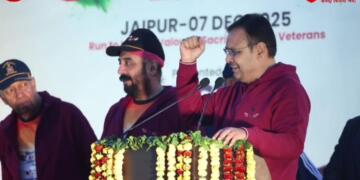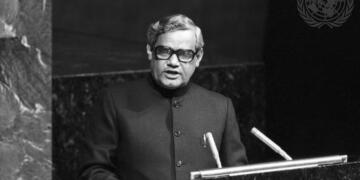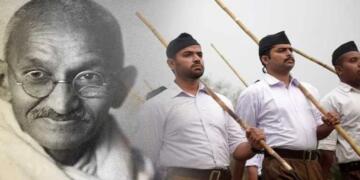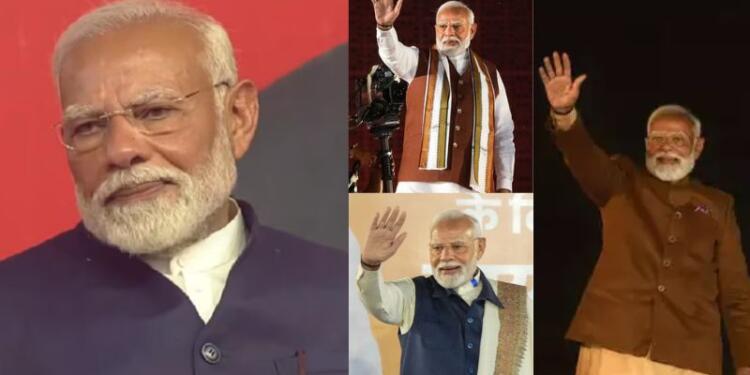The events leading up to the third consecutive oath-taking ceremony of Prime Minister Narendra Modi had one aspect which most of us had never seen. PM Modi was not happy, and one could see it from his otherwise stoic face.
It seems like the BJP working committee and cadre took the signal on themselves and turned things around in such a way that, just before going to meet US President Donald Trump, the Indian Prime Minister can rest assured that people’s trust in his leadership had been restored.
In the last eight months, the party has registered victories in Haryana, Maharashtra, and Kundarki bypolls—three almost certain losses for the party due to anti-incumbency narratives and demography. The high strike rate comes with a vote share of less than 50 per cent—the highest of which will be in Delhi.
If the Lok Sabha setback to the BJP taught anything, it is the notion of staying grounded and not compromising on core ideology for the cheap thrills of temporary electoral victory. On the other hand, opposition parties are letting things slip out of hand, with anarchic statements on administration and electronic voting machines as the only apparent backup option.
Here is how elections have changed in India over the last eight months:
A Polished Candidate Is Needed For The Seat
Any field reporter interacting with local voters is seeing how people’s choice of topic is changing. We all are witnesses to increasing videos of people talking more and more about water, electricity, housing, and their local MLAs. The names of big leaders are reduced to “Oh, they are doing good (or bad) work,” but specificity is missing.
The presence of various interest groups—ranging from caste-based armies to women’s self-help NGOs—has made people more aware of what they don’t want to miss from politicians’ kitties. The Faizabad Lok Sabha seat debacle stands as strong testimony to the phenomenon.
Consequently, the candidate needs to be more polished in their policies, social interactions, and other aspects which shape their political journey. The era of the aura of a politician is eroding fast, credit for which goes to improved law and order as well as decentralised economic options and access to information.
Can’t Compromise On Main Face As Well
While it is true that the candidate has to be ideal, it should not translate into using a rubber-stamp leader’s face for the ultimate posts like chief ministership and prime ministership.
For instance, Haryana was a dead case due to anti-incumbency against Manohar Lal Khattar. The BJP opting for Nayab Singh Saini—a man with a cleaner image—indicated to the public that the party was ready for course correction. Similarly, in Maharashtra, both Devendra Fadnavis and Eknath Shinde came across as grounded leaders, and their leadership was never in doubt.
Even in Jharkhand, opposition I.N.D.I. alliance infighting did not stop them from picking Hemant Soren—a man enjoying support from tribals—as the chief minister candidate. On the contrary, the National Democratic Alliance paid for not having a distinct face as a chief minister candidate.
Although the BJP won without a face in Delhi, the credit for it goes largely to the anti-incumbency wave against Kejriwal and the next takeaway.
Hyper Localisation And Nano Targeting Of Identity Groups
The election results have only vindicated those political units whose cadre base went to the last mile. During the Haryana elections, the BJP had gathered massive manpower which went to individual colonies for advertising the party. They also met different pressure groups to assure them that problems were in the past and the new chief minister would be a net positive for them.
The strategy holds true for Maharashtra too, where the smallest booth-level workers were giving reports to high command about developments. In Delhi, the party beat AAP in its own den.
AAP’s strategy from the beginning has been projecting itself as a party which is in politics for welfare and does its politics as a part-time job necessary to take the throne for welfarism.
The BJP picked issues like air pollution, traffic congestion, poor roads, failed promises, school education, and sanitation, among others, and termed the government as AAPda ki sarkar. This was a psychological game changer for voters who love to stay on the periphery and pick their voting choice at the last moment.
In effect, the BJP told undecided voters that AAP’s claim of doing dirty politics as a side job does not stand the test of reality. Poor infrastructure only indicates that the party has taken full-time politics as the main job and developmental politics as an addendum necessary to stay in power. This is effectively Congress 2.0, and Delhi people don’t like it.
At the same time, the BJP also made sure it ticked the demographic boxes and brought big leaders from different communities across India to win their loyalty. With Delhi, its strategy of positive experiments along with ticking old-school politics boxes now seems to be on track.
Freebies Are Here To Stay
A castigated term a few years ago, freebies are mainstream now. Thousands of crores are being spent by various political parties to woo voters—mainly women, scheduled castes/tribes, and other backward classes.
During AAP’s podcast at Think School, Raghav Chaddha provided circular logic of money making its way back into the economy through consumer spending. The question still remains whether it could have been utilised in a better way.
If ₹37,000 crores being spent by Delhi government on subsidies had been utilised for promoting private space tech companies, the dividend could have been in the nature of more innovation leading to greater investments and job opportunities.
But apparently, that may be a long-term projection. The five-year election cycle runs on immediate reward mechanisms rather than long-term impact. There is still a long way to go for the final outcomes of freebies, but parties are secure about the politico-economic equation of more freebies translating to more votes.
The BJP has fully adapted to it now, and the party has to figure out ways to monetise those spendings or money in the bank accounts of their voting groups.
If there is one party which cannot let freebies go off the common-sense radar—like reservation—it is only the BJP, since the party has shown its ability to not cater to populist sentiments in the past.
Cannot Take Things For Granted
Both the BJP and opposition share one common sentiment—that activeness and alertness may not bring victory, but complacency will definitely lead to loss.
The BJP had done so during the Lok Sabha elections by taking lazy decisions like forcing the central face down to the local level and offering a deaf ear to the criticism of the party’s mechanism by those who have been with it for ideological reasons. Even the Sangh Parivar reportedly was not as enthusiastic for the Lok Sabha elections as it should have been.
Arguably, the party had gone into hibernation due to its work on the economic and inclusivity front, assuming that people would automatically vote for it. This also explains the inclusion of turncoat leaders in the party’s fold—both at the cadre and high-command decision-making level.
Politics does not work like that, and the BJP learnt it the hard way in 2004 as well as 2024. The redemption effort put together by the BJP saw the old guard being taken back and a return to its ideology in an aggressive way.
At the same time, the opposition is committing the same mistake which the BJP did in the 2024 Lok Sabha elections.
Modern politics is as much about development as development being seen as done by someone whom people like. More the poll strategists realise it, better will be dividend.































